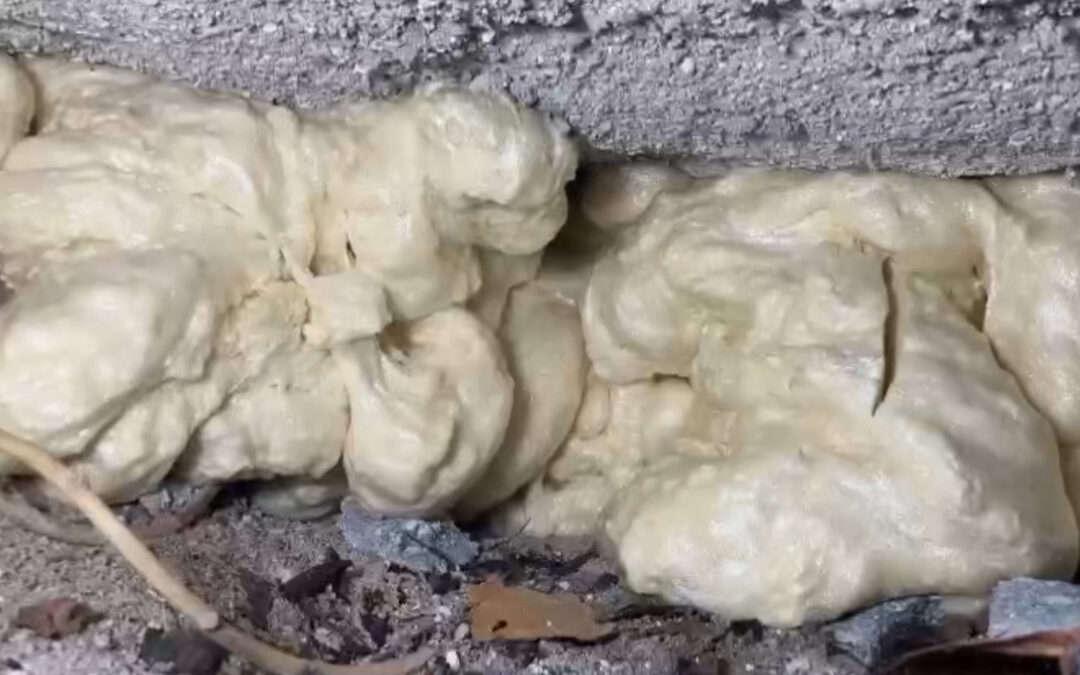When most people think about eco-friendly products, foam probably isn’t the first thing that comes to mind. But in the world of concrete lifting, polyurethane foam offers surprising environmental advantages—especially when compared to traditional methods like mudjacking.
At Sealtite Insulation & Slabjacking, we use high-performance polyurethane foam exclusively for all slabjacking projects. And while we don’t offer mudjacking, we do believe in educating our customers about the options—and the real environmental impact behind each one.
♻️ What Makes Polyurethane Foam Eco-Friendly for Concrete Lifting?
Even though polyurethane foam is made from petroleum-based components, its lightweight, efficient, and durable properties help make it a smart eco-conscious choice:
✅ 1. Minimal Material, Maximum Efficiency
Polyurethane foam weighs just a few pounds per cubic foot, compared to one hundred pounds per cubic foot for cement-based slurry used in mudjacking. Less material means:
-
Fewer raw resources used
-
Lower transportation emissions
-
Less wear on soils (no overloading or further sinking)
✅ 2. Long-Term Durability = Less Waste
Foam cures in minutes and doesn’t wash out or break down over time like mudjacking materials often do. This means:
-
Fewer repeat repairs
-
Less concrete replacement
-
Lower lifetime environmental impact
✅ 3. Water-Resistant and Soil-Stable
Polyurethane foam is closed-cell, meaning it resists water infiltration. That helps prevent:
-
Soil erosion
-
Freeze-thaw damage
-
Future voids that would require more material to fill
🌿 What the Manufacturers Say
We work with industry-leading manufacturers like HMI, Chemline, and NCFI—all of whom are pushing the boundaries in sustainable foam development:
🧪 HMI
-
Offers polyurethane foam with over 40% recycled or biobased content
-
Many products are USDA Certified Biobased, reducing petroleum dependency
-
Formulas are designed for precision, so there’s minimal overspray and waste
🧪 Chemline
-
Specializes in environmentally friendly, non-toxic foam systems
-
Chemline foams are free from heavy metals and harmful leachates
-
Products are designed for durability, reducing the need for future repair work
🧪 NCFI
-
Offers a range of low-VOC and hydro-insensitive foams (like TerraThane™) for safe and sustainable use underground
-
Foam is designed to minimize soil disturbance and last for decades
-
Formulas are tailored to reduce jobsite waste and emissions with fast cure times
🆚 Eco-Friendliness: Polyurethane Foam vs. Mudjacking
| Feature | Polyurethane Foam | Mudjacking |
|---|---|---|
| Material Volume | Minimal (2–6 lb/ft³) | Heavy (100+ lb/ft³) |
| Soil Compression | Very Low | High |
| Water Resistance | Excellent (closed-cell) | Poor (cement absorbs moisture) |
| Longevity | 10–20+ years | Often needs repeating |
| Recycled/Biobased Options | Yes (HMI, Chemline) | No |
| Energy Use | Low application energy | High mixing/hauling energy |
🌎 Final Verdict: Yes, It Can Be Eco-Friendly
While polyurethane foam isn’t inherently eco-friendly like natural materials, its performance, efficiency, and longevity make it a more sustainable concrete lifting solution than traditional methods. Especially when using products from manufacturers who prioritize green chemistry and recycled content.
At Sealtite Insulation & Slabjacking, we’re proud to use environmentally responsible foam products that get the job done right—and help preserve the ground they’re injected into.
💬 Ready to Lift Responsibly?
Want to level your concrete without damaging the environment—or your wallet? Contact Sealtite Insulation & Slabjacking for a free estimate today. Our eco-conscious polyurethane slabjacking solutions are the sustainable, long-term fix your property deserves.
